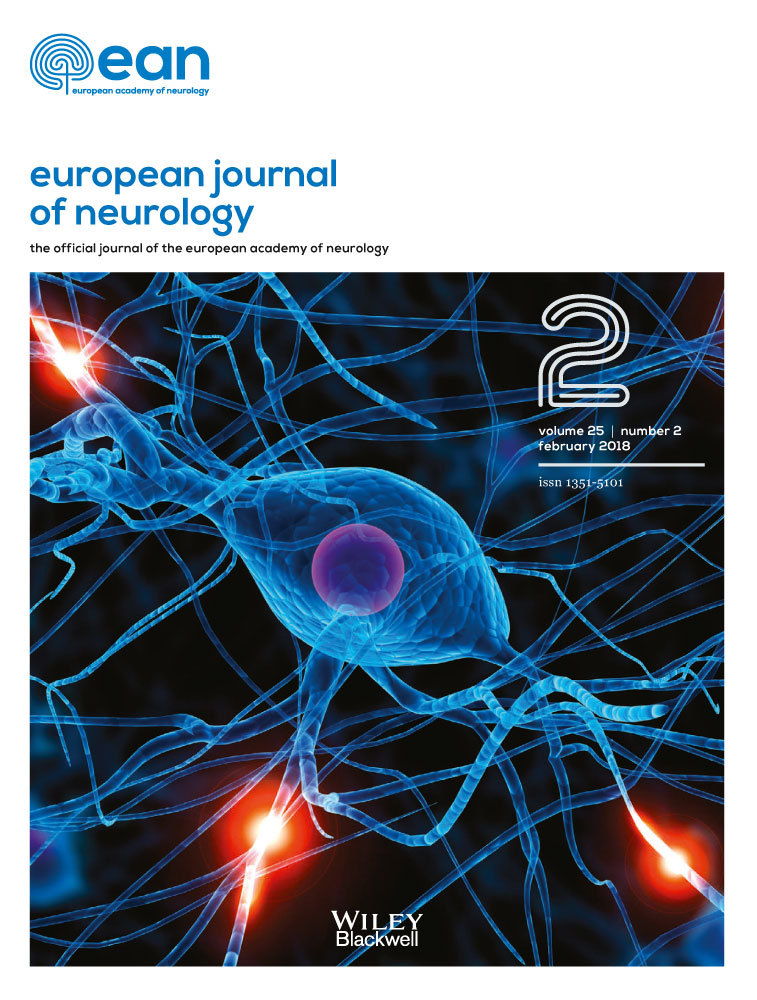The risk of ischaemic stroke in primary antiphospholipid syndrome patients: a prospective study
Abstract
Background and purpose
The most common neurological manifestation of antiphospholipid syndrome (APS) is ischaemic stroke. Identifying patients with APS at high risk for developing any thrombotic event remains a major challenge. In this study, the aim was to identify predictive factors of ischaemic stroke in a cohort of primary APS (PAPS) patients who presented with new onset symptoms suggestive of acute stroke.
Methods
This prospective multicentre study included 36 consecutive PAPS patients who presented with new onset symptoms suggestive of an acute stroke. Patients were prospectively followed up for 12 months.
Results
In 10 (28%) out of 36 PAPS patients [mean age 41 years (SD 13.4), 70% female], the suspicion of an acute stroke was confirmed by brain magnetic resonance imaging. Sixty per cent of these patients were <50 years old. Eight of the 10 patients had a history of previous venous thrombosis and were receiving vitamin K antagonist (VKA), with international normalized ratio target 2–3; one patient had a history of a previous arterial event receiving treatment with VKA target international normalized ratio 2–3 plus low dose aspirin; and one patient had a history of previous pregnancy morbidity receiving only low dose aspirin. Time in the therapeutic range for patients receiving VKA was 77.7% (SD 6.6%). Hypercholesterolaemia was significantly higher in patients with confirmed stroke compared to those without (P < 0.05). Similarly, a significantly higher rate of anti-β2 glycoprotein-I (β2GPI) antibodies (immunoglobulin G/immunoglobulin M; P < 0.05) and higher adjusted global APS score (aGAPSS) values were found in patients with a confirmed stroke [mean aGAPSS 8.9 (SD 4.7) vs. mean aGAPSS 6.4 (SD 2.5); P < 0.05].
Conclusions
Patients with PAPS, including young patients, have a high risk of recurrent thrombosis despite anticoagulation treatment. A careful risk assessment is mandatory to identify patients at risk for recurrence.




